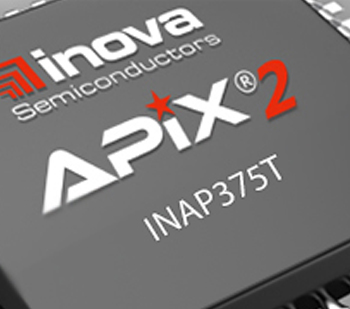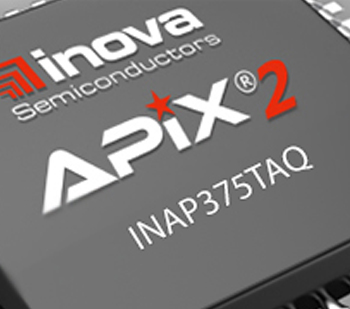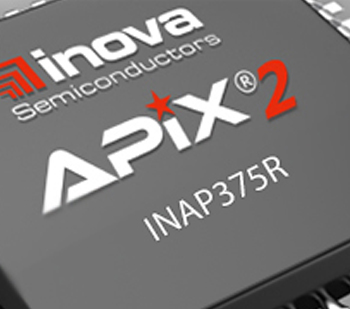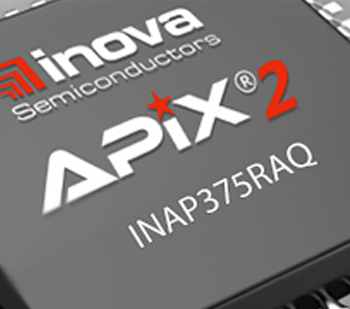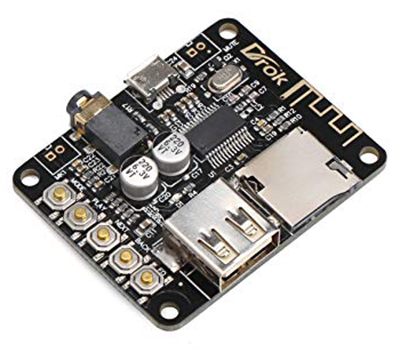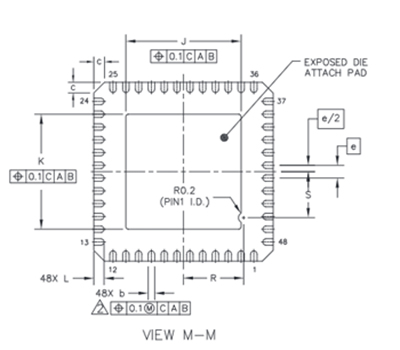APIX2 - Second Generation
The APIX2 technology, integrated in INAP375T transmitter and INAP375R receiver devices, offers high speed differential data transmission over a single twisted pair (STP) cable.
Based on current mode logic, the physical layer drives up to 12 meters of cable at 3Gbps.
At link level, APIX2 uses transmission frames, which are dynamically filled with either video, audio, GPIO or AShell data. This flexible configuration allows APIX2 to be optimized for various applications.
The automotive shell (AShell), a protection protocol for ASIL-conformal transmission of safety-relevant data, has been optimized in APIX2. AShell2 produces virtually no more overhead for error free data transmission, an innovation compared to other guard protocols.
APIX2 PRODUCT LIST
APIX2 Transmitters
TX/RX |
Part No. |
Package |
Size (mm) |
No. of Video Channels |
Video Interfaces |
Ethernet |
Audio Channels |
HDCP |
SPI |
AShell |
MOQ |
MSL |
Status |
|---|---|---|---|---|---|---|---|---|---|---|---|---|---|
TX |
LQFP |
14x14 |
2 |
RGB/LVDS |
yes |
8 |
no |
Single Dual |
yes |
90 |
3 |
Full Production |
|
TX |
aQFN |
9x9 |
2 |
RGB/LVDS |
yes |
8 |
no |
Single Dual |
yes |
260 |
3 |
Full Production |
APIX2 Receivers
TX/RX |
Part No. |
Package |
Size (mm) |
No. of Video Channels |
Video Interfaces |
Ethernet |
Audio Channels |
HDCP |
SPI |
AShell |
MOQ |
MSL |
Status |
|---|---|---|---|---|---|---|---|---|---|---|---|---|---|
RX |
LQFP |
14x14 |
2 |
RGB/LVDS |
yes |
8 |
no |
Single Dual |
yes |
90 |
3 |
Full Production |
|
RX |
aQFN |
9x9 |
2 |
RGB/LVDS |
yes |
8 |
no |
Single Dual |
yes |
260 |
3 |
Full Production |
APIX2 GLOSSARY
ASHELL
The internal AShell provides error corrected data re-transmission from the receiver to the transmitter and vice versa. It ensures that the receiving side of the AShell will only offer error free data to the application.
The error detection is based on a CRC sum, generated at the transmit path and checked at the receive path. The AShell executes transmission and reception of application data ensuring data integrity, and supply of information about transmission link status, as well as simple errors to the application.
BACKWARD COMPATIBILITY
The APIX2 functionality of the INAP375R has evolved from the established first generation APIX devices INAP125T and INAP125R, already offering a 1 Gbps video link in combination with full-duplex data communication over 2 pairs of wire. This technology has also been licensed to other semiconductor vendors, allowing the integration of the transmitter and receiver IP into customized or application specific devices.
In order to keep compatibility to already available devices, the INAP375R offers two modes of operation: APIX1 Mode compatible to INAP125T/R and 3rd party APIX1 implementations and APIX2 Mode with full functionality. The APIX mode needs to be set by the respective boot-strap pin of the device.
CURRENT MODE LOGIC
The APIX2 physical layer is based on current mode logic (CML). The CML transmitter uses a constant current source, generating a differential signal at a twisted pair cable. The generated voltage is defined by the termination resistors of 50Ohms, integrated in the transmitter and receiver devices, and the drive current configured for the current source.
The INAP375T incorporates a flexible frontend, to optimize the signal for different cable characteristics. The APIX link is optimized for DC balanced, AC coupled transmissions, requiring external coupling capacitors of typically 100nF in the transmission line, with a differential impedance of 100Ohm through connectors and cable.
DAISY CHAINING
The APIX2 daisy chain functionality, allows connecting two INAP375R to one INAP375T. The INAP375R offers an APIX2 serial link output, to which a second INAP375R receiver can be connected. Both INAP375R receive the full information on video, audio, data and GPIO provided by the INAP375T.
However, the AShell communication, (with exception of the Ethernet mode) is a point-to-point communication. For this, the INAP375T offers two AShell instances, supporting two virtual point to point links from the transmitter to each of the receivers.
DEVICE CONFIGURATION
The INAP375R and INAP375T are very flexible devices, offering a wide range of features and configurations to optimize the available features as well as the serial link quality for different application requirements. The configuration is kept in an internal register set, which is set to default on power-up or hardware reset. Most configuration changes require an internal soft reset to become active. The configuration registers are accessible through the SPI interface and the I²C interface, for configuration by the main controller or an EEPROM, but can also be modified through the serial link via remote configuration from the transmitter.
The INAP375R offers several boot strap pins, which define how the device will come up and check for a configuration after boot up or hardware reset. The device automatically performs an internal soft reset after configuration. Configuration via SPI or remote configuration is always possible, even if the device has been configured via EEPROM. The bootstrap options become valid after power-up or hardware reset.
MEDIA INDEPENDENT INTERFACE
Offering a Media Independent Interface (MII), the INAP375R can be directly connected to an Ethernet Media Access Controller, offering full network capabilities through the APIX link. The MII enables the application to use the INAP375R as Ethernet PHY, directly connecting the device to a Media Access Controller (MAC). The MII has been implemented according to the IEEE standard, offering up to 100Mbps full-duplex Ethernet functionality. Since the Ethernet functionality requires certain features to be fulfilled by the communication channel, the data communication through SPI is not available. However, the SPI slave interface is still available for register access and I²C jobs.
Additionally, the link is optimized to carry low latency GPIO signals for reset or synchronization purposes. The built in audio path allows synchronous transmission of up to 4 stereo audio channels, with highly precise clock regeneration at the receiver for high-end rear-seat entertainment applications.
PHYSICAL LAYER ARCHITECTURE
The APIX2 physical layer can be adapted to a wide range of different cables and connectors. It provides mechanisms for the automatic compensation of aging effects. APIX2 can operate with many different cables, however, such cable assemblies have to comply with certain limits for insertion loss, reflection and mode conversion.
From the transmitter, the APIX2 downstream high-speed link implements a configurable, digital high-pass filter (FIR) to compensate the low-pass characteristic of a cable. The output current can be adapted to compensate different insertion loss values. An automatically configured (adaptive) equalizer at the receiver again compensates the low-pass characteristic of the cable. As the equalizer automatically adapts its characteristics to the input signal, it compensates for aging effects of the cable as well as manufacturing margins. The input gain is set automatically.
REMOTE CONFIGURATION
Alternatively to a local configuration, the INAP375T and INAP375R can be configured through the APIX link. Remote configuration or access to the registers is possible as long as the APIX link is aligned and the AShell is operational. If no local configuration is performed after hardware reset, the devices boots up with default settings. The default settings for INAP375T and INAP375R make sure, that the APIX link and AShell can be operational and with this remote configuration over the link is possible.
After remote configuration, the device needs a soft reset and will come up with the newly configured settings. Remote configuration of the receiver is possible from the transmitter side and vice versa. Receivers are typically remote configured in display applications and transmitters in the case of cameras, saving additional components in those subsystems such as microcontrollers or EEPROMs.
VIDEO INTERFACES
The APIX2 technology offers complete flexibility for display and video interface configuration, only limited by the available bandwidth of the APIX2 link. Panel resolution, colour depth and frame rate are defining parameters within the application. APIX2 device can support for example HD Displays at 24bit colour depth and also popular automotive displays as 1600x600 pixels, 24 Bit colour depth and refresh rates of up to 100Hz.
The device offers a flexible video interface, configurable to handle 1 or 2 independent video streams, with input interfaces such as parallel RGB (1x24 Bit or 2x10 Bit) or 2x open LDI compliant LVDS (4 lanes + clock). In addition to the video transmission, APIX2 provides completely independent full duplex communication channels.






